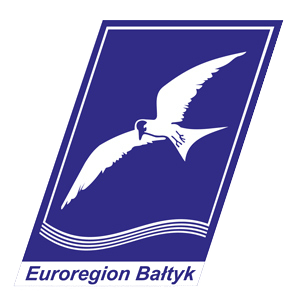What is Euroregion?
Euroregions in Poland - useful information and definitions
Cross-border cooperation
A breakthrough in politics and the system in 1989 between the countries of Central Europe made it possible to establish cross-border cooperation and its institutionalization.
In cross-border cooperation, the following should be mentioned:
- cross-border cooperation,
- Euroregional cooperation.
Cross-border cooperation is any joint action taken to strengthen and develop neighbourly contacts between communities and territorial authorities of two or more parties and is a concept broader than Euroregional cooperation.
The Euroregion is:
- institutionalized formal relationship, concluded between state or local government organizations, or informal, created by professional or scientific associations for the cooperation of border areas,
- a formalized structure of cross-border cooperation between regional or local government entities, possibly with the participation of economic and social partners,
- agreement of neighboring border regions on cross-border cooperation,
- local institutionalization of cross-border cooperation with full recognition of state borders and laws in force in countries participating in the creation of a given euroregion,
- a cross-border structure associating associations of administrative unions of individual areas within it for the purpose of mutual cooperation,
- a cross-border organization whose framework is determined by similar problems, the intertwining of relations, as well as the readiness for cooperation of individual units and local institutions.
The definition of the Euroregion is:
it is a formal structure of cross-border cooperation bringing together representatives of the local and regional level, as well as, in justified cases, the social partners. They are legal entities that set goals and have extensive possibilities of action.
Euroregional cooperation areas:
- border areas (border, border); area and zone,
- border area, border area, cross-border area,
- region,
- border region (border, border),
- cross-border region,
- euroregion.
Other most commonly used definitions:
Border area - a strip up to 100 km from the border
Border zone - a strip of 20-30 km from the border
Border zone - a strip of 2-6 km from the border
Necessary road strip - strip 15-100 m from the border
Border area, border area and cross-border area - these are terms with similar meanings. It is understood as the area adjacent (in the vicinity) to the border on both sides.
Region - is understood as a separated, relatively homogeneous area, distinguished from the adjacent areas by natural or acquired features.
A border region (border, border) is an area located on one side of the border.
Cross-border region - this is an area located on both sides of the border.
Institutions and organizations supporting the functioning of Euroregions:
An important role in cross-border cooperation on Poland's borders have:
- International institutions and organizations, including the Council of Europe and the European Union,
- International non-governmental organizations supported in solidarity by the Council of Europe and the European Union,
- Intergovernmental and national commissions (committees) and offices dealing with the problems of this cooperation.
Cooperation of border regions has been one of the European Union's priorities for many years. The Commission of the Community and the European Commission provide financial assistance to border regions under a special INTERREG program. In 1994, the Committee of the Regions was established as an advisory body to the Council of Europe and the European Commission, and at the same time as a representation of local and regional authorities from the Member States of the European Union.
In order to increase their role in European cooperation, the regions created an international non-governmental organization - the Association of European Border Regions (AEBR). The seat of the Association is the city of Gronau in West Germany.
The tasks of AEBR include in particular:
- Implementation of joint programs and projects, applying for funds, depositing and disposing of them,
- Organizing events related to the issues of cross-border cooperation,
- Participation in solving cross-border problems and supporting particularly important, model initiatives,
- Preparation and implementation of joint actions,
- Extension of the "center of European border and cross-border regions" in close cooperation with the European Union and the Council of Europe,
- Informing politicians and the public in Europe about issues of cross-border cooperation,
Euroregional cooperation is an important instrument for creating new relations in Europe.
The basis of the new legal infrastructure of bilateral relations is multilateral (international) agreements, in which one of the most important principles is the establishment and development of various forms of cross-border cooperation.
Agreements drawn up and adopted by international institutions, in particular by the Council of Europe or the Association of European Border Regions (AEBR), are of particular importance for cross-border cooperation in Polish border regions. The group of these contracts mainly includes:
- The 1980 European Framework Convention on Cross-Border Cooperation between Communities and Territorial Authorities, known for short as the Madrid Convention,
- The European Charter of Border and Cross-Border Regions of 1981,
- European Charter of Local Self-Government of 1985
- The 1997 European Charter of Regional Self-Government
- European Framework Convention on Cross-Border Cooperation between Communities and Territorial Authorities adopted by the Council of Europe in 1980 in Madrid.
Financing Euroregional Cooperation
The financing of cooperation is specified in the statutes of the Euroregions. Euroregion members are obliged to cooperate in financing its activities in the agreed amount and form. These funds are kept in separate accounts and come from sources such as:
- membership fees paid by the participants of the Euroregional Agreement, contributions from supporting members, gifts, etc.,
other sources of financing:
- subventions of higher-level administrative units, including regional and central funds (e.g. when paying membership fees to AEBR),
- funds from aid programs of the European Union.
